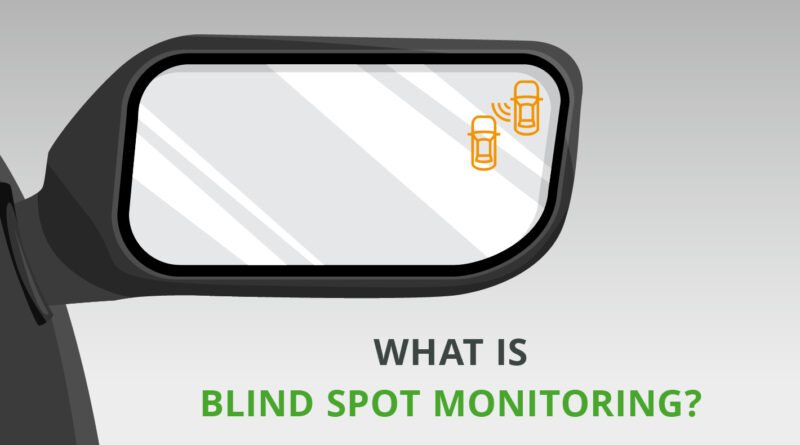What is Blind Spot Monitoring BSM?
Blind Spot Monitoring (BSM) is an advanced driver-assistance system (ADAS) designed to enhance vehicle safety by alerting drivers to the presence of other vehicles in their blind spots. These blind spots are the areas around the vehicle that are not visible to the driver through the rear view or side mirrors. BSM systems help prevent accidents during lane changes and other manoeuvres by providing visual or audible warnings when another vehicle is detected.
How Does Blind Spot Monitoring Work?
Blind Spot Monitoring systems use a combination of sensors, typically radar or cameras, to monitor the areas around the vehicle. Here’s a detailed look at how BSM systems function:
- Detection: Sensors are usually located in the rear bumper or side mirrors. These sensors continuously scan the adjacent lanes for vehicles.
- Warning: If a vehicle is detected in the blind spot, the system alerts the driver through visual indicators, usually located on or near the side mirrors. In some cases, an audible warning or a vibration in the steering wheel or seat may also be triggered if the driver attempts to change lanes while a vehicle is in the blind spot.
- Additional Features: Some advanced BSM systems include Rear Cross Traffic Alert (RCTA), which warns drivers of approaching traffic from the sides when backing out of a parking space, further enhancing safety.
Benefits of Blind Spot Monitoring
Blind Spot Monitoring systems offer several key benefits that enhance driving safety and convenience:
- Increased Awareness: BSM provides real-time information about the presence of other vehicles in the driver’s blind spots, helping to avoid collisions during lane changes.
- Reduced Accidents: By alerting drivers to potential hazards in their blind spots, BSM significantly reduces the risk of side-swipe accidents and other collisions.
- Enhanced Confidence: Drivers can feel more confident and secure when changing lanes, knowing that the system will alert them to any unseen vehicles.
- Improved Safety for All Road Users: BSM not only protects the driver but also enhances the safety of passengers, pedestrians, and other motorists by preventing accidents.
Situations Where Blind Spot Monitoring is Most Useful
BSM systems are particularly beneficial in several driving scenarios:
- Highway Driving: Lane changes at high speeds can be dangerous if another vehicle is in the blind spot. BSM helps mitigate this risk by providing timely alerts.
- City Driving: In busy urban environments, where drivers frequently change lanes and merge into traffic, BSM enhances situational awareness.
- Parking Lots: Rear Cross Traffic Alert, often included with BSM, is invaluable in crowded parking lots, helping drivers avoid collisions when reversing out of spaces.
Technology Behind Blind Spot Monitoring
The effectiveness of BSM systems relies on advanced sensor technology. Here’s a brief overview of the key components:
- Radar Sensors: Most BSM systems use radar sensors that emit radio waves and detect reflections from nearby vehicles. Radar is effective in various weather conditions and provides accurate detection.
- Cameras: Some systems use cameras to visually monitor blind spots. Camera-based systems often provide additional features, such as lane-keeping assistance.
- Ultrasonic Sensors: In some cases, BSM systems use ultrasonic sensors, especially in lower-speed situations like parking.
Conclusion
Blind Spot Monitoring (BSM) is a vital safety feature in modern vehicles, designed to reduce the risk of accidents by alerting drivers to the presence of other vehicles in their blind spots. By utilizing advanced sensor technology, BSM systems provide real-time warnings, enhancing driver awareness and confidence.
As automotive technology continues to evolve, BSM systems are becoming standard in many new vehicles, contributing to safer roads for everyone. Understanding and utilizing BSM can significantly improve your driving experience, making it safer and more enjoyable.
Buying a used VW. Buying used vauxhall, BMW, Jaguar, Ford, Volvo, Range rover, Bentley, Aston Martin, Porsche, Ferrari, Lamborghini, Maserati, Hyundai, Tesla, Honda, Pagani

